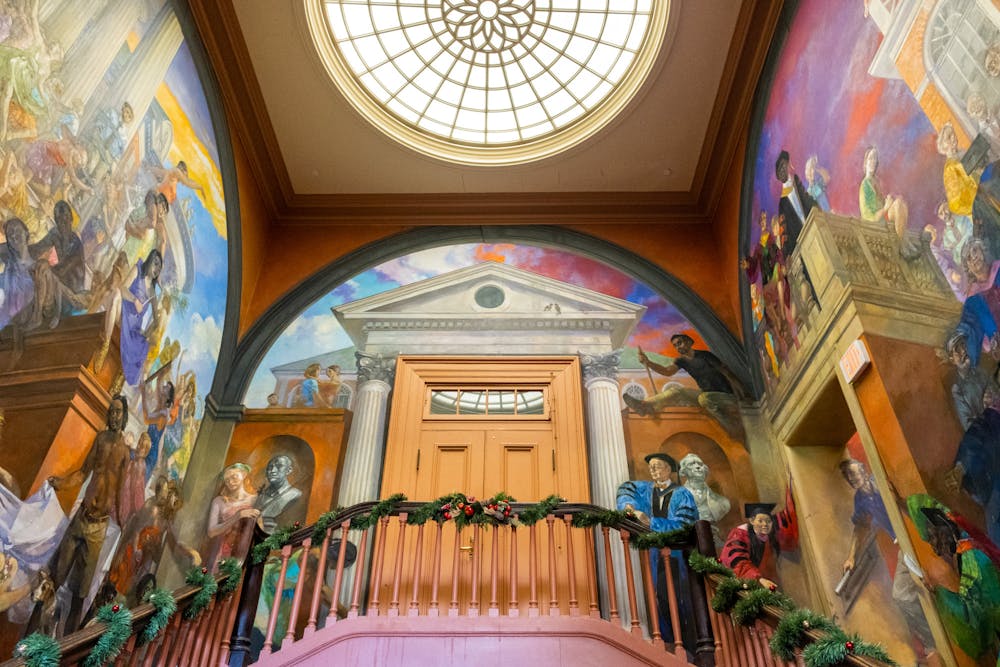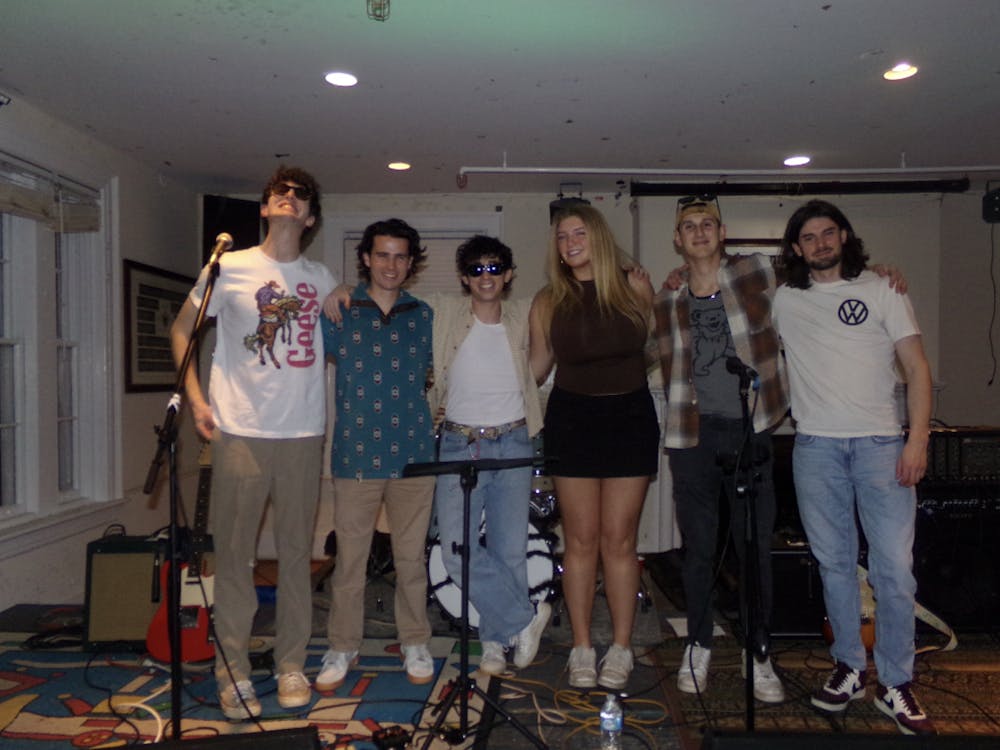Art is a driving force for student expression at the University. It is — sometimes literally — a canvas for students to tap into their artistic sides and express themselves in new and meaningful ways. From student-formed bands that elevate nightlife, to individual art exhibits on display at the University’s Ruffin Gallery, the arts community at the University is filled with a plethora of passionate creatives.
As the academic year winds down, these creatives have the time to reflect on the University’s arts scene and recognize that while it is vibrant, there is much room for improvement. Four heavily involved Miller Arts Scholars — a collective of student artists supported by grants to pursue the arts at the University — spoke with The Cavalier Daily and painted a detailed landscape of what a better future for the arts may look like based on what they have experienced as artists on Grounds.
With nearly 130 arts-related Contracted Independent Organizations at the University, students have plenty of opportunities to get involved with the arts around Grounds. Will Conrad, first-year Engineering student and Miller Arts Scholar, said CIOs like the Virginia Players and First Year Players allowed him to discover his love for lighting design rather quickly.
Conrad said the opportunity to work on theater tech for those organizations, as well as The New Works Festival and Lighting of the Lawn, in just his first two semesters at the University exposed him to the welcoming community of student artists on Grounds.
“There is just so much to do … and everyone I have worked with has been more than eager to work with the incoming students to get them involved,” Conrad said.
Despite this outpouring of support from the arts community itself, Conrad said he has noticed a lack of adequate performance spaces and funding from the University for independent student arts initiatives.
Conrad said that department theaters are typically reserved for class productions and are too expensive to rent out even when they are available to the larger student body. This lack of space leaves most theater CIOs with the Student Activities Building, a warehouse-like building located by Scott Stadium, as the only other performance venue option, according to Conrad.
“I know for the past several years, [student theater organizations] have been asking for an actual performance space instead of a concrete box,” Conrad said.
According to Conrad, students involved with theater at the University not having adequate performance spaces to rehearse or perform is akin to football players not having access to a field for games. He explained that lackluster performance spaces rob students interested in the performing arts of a professional learning experience and significantly limit audience attendance.
Mary Hall, third-year College student and Miller Arts Scholar, has similarly spent much of her time at the University involved in the Drama scene. Wanting to make this community more equitable, she said that she advocates for more inclusivity for students of color within the arts, along with more access to funding for low-income or first generation students.
“There is definitely a disparity in funding and access to funding in U.Va. arts,” Hall said. “It is especially not fair to first generation or low-income students because they have to work so much harder to search for these things than students who do have the funds accessible to them.”
Wanting to be part of the change she wants to see implemented, Hall said she has taken the initiative to start conversations about revamping the Paul Robeson Players — an all-Black performance ensemble that has been on hiatus since 2021. The revitalization of this theater group is part of Hall’s overall goal of gaining more publicity and funding for arts organizations for students of color.
“Theater is a predominantly white field, and I feel like there could still be more to support those who are non-white in Drama because we are still trying to figure out how we can best have a place there,” Hall said.
The Drama department is not the only one that struggles to alleviate financial barriers for its students. Jolinna Li, third-year College Student and Miller Arts Scholar, expresses a similar sentiment about taking studio art classes at the University. According to Li, students need to pay for all of their own arts materials — something the Arts Students Society is working toward fixing.
“Arts supplies are really expensive. I wish there was more support for that,” Li said.
Meg Kosefeski, third-year College student and Miller Arts Scholar, suggests a solution to this cost barrier — a communal pantry of arts supplies that can be recycled and reused by students. According to Kosefeski, the studio art community at the University would largely benefit from this sustainable and cost-efficient innovation.
Kosefeski was involved with a number of projects this past year to enhance the overall arts experience at the University. They worked on a team made of Miller Arts Scholars that petitioned for the University to provide all undergraduate students full personal access to Adobe Creative Cloud — the petition had generated nearly 300 signatures at the time of this article’s publication. This group of Miller Arts Scholars also helped introduce an open mic night through the WXTJ Student Radio that gave smaller student artists from different genre backgrounds a platform to perform their music.
“[WXTJ] did a good job addressing the desires of the community, incorporating feedback and understanding that [musicians] had this need for us to expand our inclusivity and access,” Kosefeski said.
On top of more inclusivity, accessibility and funding for arts at the University, something each of these students expressed is a strong desire for more visibility of the arts on Grounds. Moving forward, Li said she would like for the broader University community to be more involved with the arts at the University.
“I feel like everybody has something to gain from looking at art and talking about it,” Li said.
One suggestion from Li was that the University should hold more arts-related events on Central Grounds where the general student body can easily witness them. This suggestion underscores a commitment amongst the Miller Arts Scholars to making the arts scene at the University the best that it can be.
These Miller Arts Scholars see the potential for the arts at the University to be a supportive sphere that allows its students to thrive. With the efforts they have already spearheaded to make arts organizations and resources more accessible, and their proposed adjustments to make the arts more front-facing on Grounds, the University can look to them for the blueprint of an improved arts scene — one where arts students can explore their passions to the fullest.







